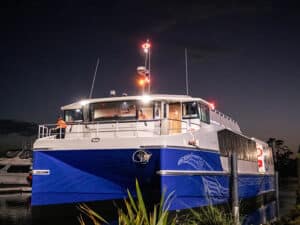
Scottish shipbuilder gets EU funding for hydrogen-fueled car ferry
Written by Nick Blenkey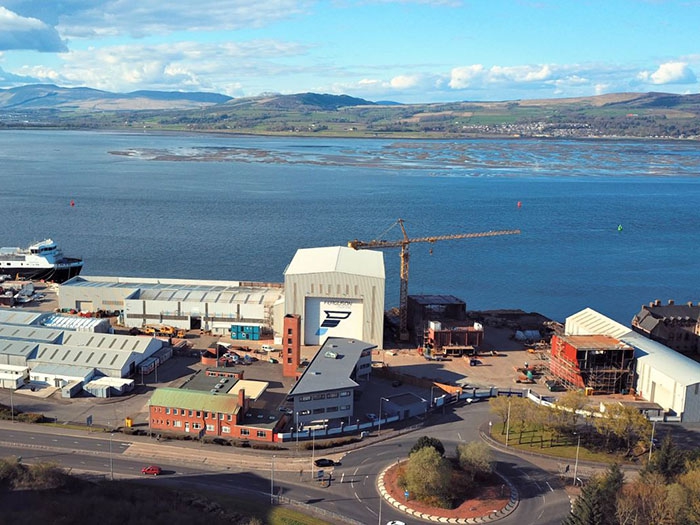
Since 2015, Ferguson Marine shipyard has undergone a $34 million renovation
JUNE 20, 2018 — A European consortium led by Port Glasgow, Scotland, shipbuilder Ferguson Marine Engineering has won EU funding for a project that will see the construction of the world’s first seagoing car and passenger ferry to be fueled by hydrogen.
The supported development is expected to cost around EUR 12.6 million (about $15 million), with EUR 9.3 million of this coming from the European Union’s Horizon 2020 research and innovation fund.
The vessel’s fuel will be produced from renewable electricity, marking a huge shift towards entirely emissions-free marine transport.
The HySeas III project, jointly led by Ferguson Marine and the University of St Andrews, includes Orkney Islands Council; Kongsberg Maritime (Norway); (Denmark); McPhy (France); DLR – German Aerospace Center; and Interferry (Belgium/US) the global trade association for ferry operators and suppliers.
Employing Ballard technology, already proven across millions of miles of road transport, the initial objective is to construct and prove the vessel’s modular drive train onshore, testing for stress and durability under conditions employing real-world data from existing vessels.
The successful test will allow a vessel to be constructed that can operate safely and efficiently around Scotland’s challenging coast. The vessel is planned to operate in and around Orkney, which is already producing hydrogen in volume from renewable energy that would otherwise be wasted.
Chief Naval Architect Chris Dunn of Ferguson Marine said, “Over recent years Ferguson Marine has been at the global forefront of green marine propulsion technology development. This exciting project is yet another positive step on that journey and puts us firmly on track to deliver the world’s first zero emission, hydrogen fuel cell powered commercial RoPax ferry in 2020.”
Ferguson Marine Chief Executive, Gerry Marshall, added “We now have one of the most innovative and competitive shipyards in Europe which is capable of delivering ground-breaking projects for Inverclyde, Scotland and beyond. HySeas III is a living example of how it can be possible to lead the world in marine technology.”
Project Coordinator, Dr. Martin Smith from the University of St. Andrews said, “This is a very exciting stage to be at now. This opens the real possibility of Scotland and her key European partners delivering another world-first, not simply in shipbuilding but also in building sustainable local sources of fueling in parallel.”
Dr. Smith previously played a leading role in the introduction of hydrogen buses into Scotland, a development which is now set to move beyond Aberdeen with Dundee currently following and other Scottish cities considering fleets of their own.
Jim McColl, whose Clyde Blowers Capital now owns the once-threatened shipyard, commented, “Ferguson’s was the last full-service commercial shipyard on in the River Clyde. Since taking over in 2014, we have invested £25 million (about $34 million) to bring the yard up to the world-class standards with a new, skilled workforce, that has provided the confidence in leading this hugely important, ground-breaking project.”
Ferguson has notched a number of impressive first. In 2012, Ferguson’s launched the MV Hallaig, the world’s first ever battery hybrid ferry. The redeveloped yard achieved another first in November 2017 when it launched the MV Glen Sannox, the first U.K/ ferry build with dual-fuel capability (marine diesel & LNG). The Glen Sannox’s sister vessel is currently under construction at the shipyard.


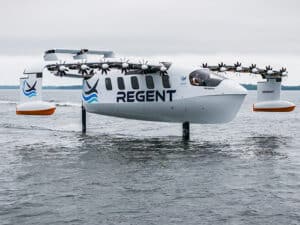
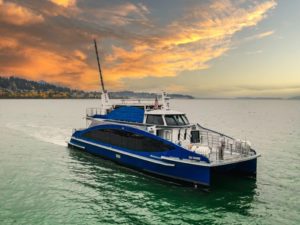
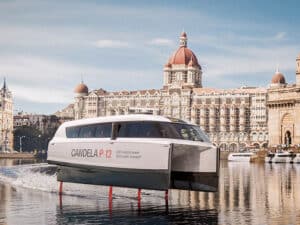
Leave a Reply
You must be logged in to post a comment.